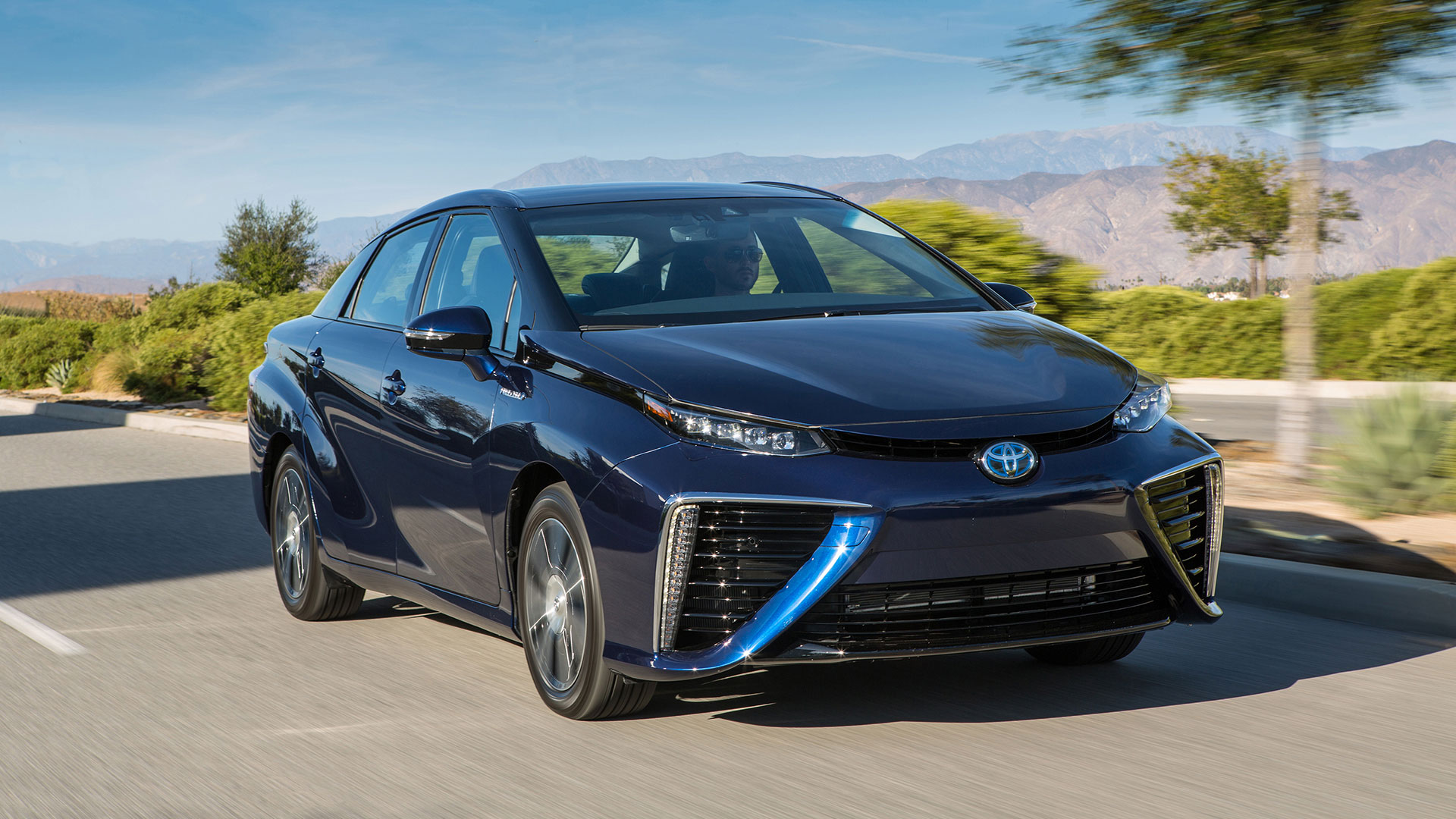The hydrogen-powered Toyota Mirai’s name means “future” in Japanese. But when you see the all-new Toyota Mirai, it isn’t hovering in midair, nor is it driving itself. It doesn’t appear to be anything else than your run-of-the-mill hybrid car, really: It’s large, has four wheels and looks like a Prius scrunched through a Lexus styling mill.
There’s good reason for that. The Mirai was actually intended to be a Lexus product, according to Toyota’s National Manager of Advanced Technology and Business Communications, John Hanson. But because one of the world’s largest automakers wanted one of world’s first mass-production hydrogen fuel cell vehicle to be a global product, it opted to brand it as a Toyota. And if you thought the hydrogen-powered vehicle concept was a dead, think again. Toyota’s running full…er…steam ahead.
The Mirai is Toyota’s first hydrogen-powered product available to the public. It’ll be limited to 3,100 units in the U.S., sold mostly in California, where there are approximately 20 functional fueling stations. As you can imagine, it’s not easy to sell a vehicle you can’t refuel, and the northeast has yet to build up its infrastructure.

The Mirai combines compressed hydrogen gas—from two high-pressure carbon fiber tanks—with oxygen to power an electric motor. The system produces just over 150 horsepower and nearly 250 lb-ft torque. That yields a zero to 60 time of nine seconds—adequate performance for something that leaves a trail of water vapor when you stomp on the accelerator.
According to Toyota, the Mirai can achieve over 300 miles of driving on a full supply of hydrogen, and the EPA estimates a combined fuel economy of 67 MPGe. After a few hours and just under 60 miles of driving, I racked up 50.7 MPGe. More time and miles would be needed to objectively verify how well the Mirai actually performs in terms of economy.

The hydrogen refueling process is reassuringly similar to traditional gasoline vehicles. You pull into the station, select your pump, insert the nozzle into the Mirai’s hook up and, approximately three-to-five minutes later, you’re done. Because hydrogen expands with heat, the fuel needs to be cooled and delivered as fast as possible into the vehicle’s storage tanks. So, according to Hanson, a frost may appear when filling up. Your checking account may also be emptied at an alarming rate.
The Mirai can hold five kilograms of hydrogen, and right now the going rate for one kilogram is about $11 dollars, which Hanson describes as “gouging.” But here’s the thing: If your application to buy or lease a Mirai is approved, Toyota provides complimentary fuel for the first three years or $15,000, whichever comes first. That’s a nice touch, and slipping behind the wheel of the Mirai won’t discourage you from driving.
The interior is positively opulent compared to the standard Prius. Still, there are a few similarities, mostly notably the centrally-located instrument panel and dated touchscreen infotainment display, as well as the shifter, which is carried over directly from the hybrid. My test vehicle’s interior was spec’d in black and dark blue SofTex, a convincing synthetic leather. According to Toyota, SofTex is environmentally friendly and more durable. That’ll jive with the modus operandi of most buyers.

On the congested streets of Los Angeles, the Mirai kept up, though I made sure to turn on the Power mode when merging onto freeways. If you leave it in Eco, you’re asking for trouble—push the go pedal and there’s a critical power lag. In Power mode, however, the super-sensitive throttle and torque to the front wheels is instantaneous. We’re nowhere near Tesla Model S territory, but we’re getting the job done. Much like any other electric vehicle, the Mirai is super-quiet, save for the sounds coming from the tires and brakes
What’s most surprising about the Mirai? It has a remarkably comfortable and well-damped ride. Its original intent as a Lexus product shines through, even in quirks, like how the windows roll up and slow down just before fully closing. And, even though it weighs over 4,000 pounds and is quite large, the Mirai was remarkably tidy as working through Palos Verdes’ sweeping roads at speed. Sure, the steering is the antithesis of communicative, but the vehicle’s body was much more controlled than I ever anticipated.

I will admit to being partial to the BMW i8, where I can hear the soulful expression of what it’s like to short shift at 5,000 revs. That said, if vehicles like the Mirai are the future, that’s not an entirely negative thing. But the one question, the same one that’s loomed since Toyota started fuel cell development decades ago, remains: Will there ever be sufficient infrastructure to support a critical mass of hydrogen products?
—
PRICE (BASE): $57,500
POWERTRAIN: Fuel cell (solid polymer electrolyte) and motor (synchronous AC) ; 152 hp, 247 lb-ft torque; FWD; single-speed CVT
WEIGHT: 4,078
0-60 MPH: 9.0 seconds
TOP SPEED: 111 mph
ON SALE: Now
